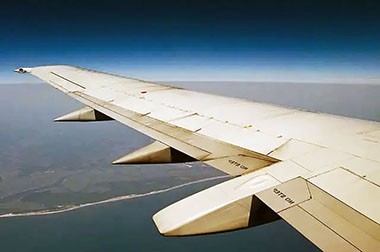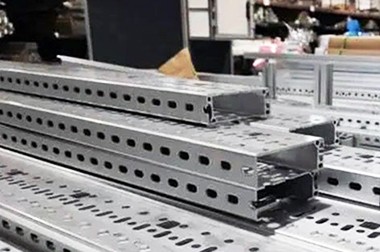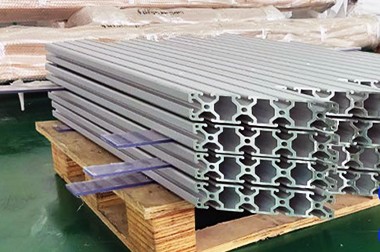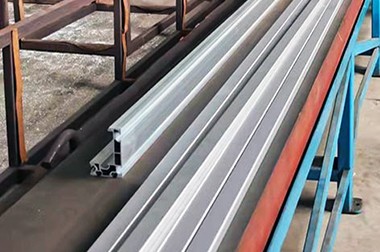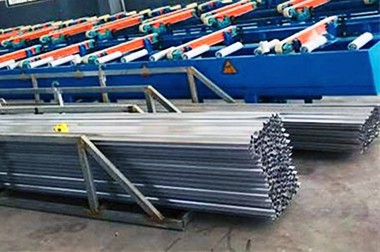7150 Aircraft Aluminum Extrusion Profile
The 7150 aluminum alloy has excellent mechanical properties, including high strength, good toughness, and fatigue resistance. Its tensile strength and yield strength are generally high, making it suitable for structures that bear heavy loads.
When using 7150 aluminum alloy, it is important to note that its welding performance is relatively poor, and special processes and pre-treatment measures should be taken during welding. Additionally, the alloy's corrosion resistance must be considered, especially when used in harsh environments.
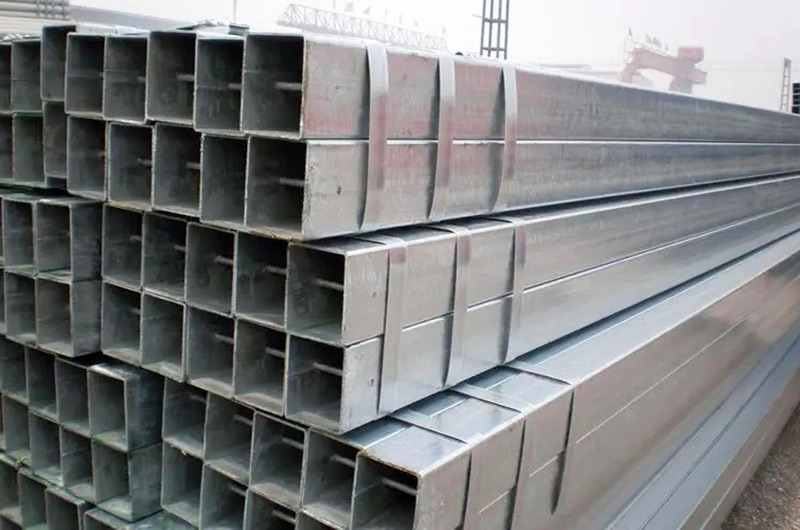
Characteristics of 7150 Aluminum Extrusion Profile
1. High Strength
The tensile strength and yield strength of 7150 aluminum alloy are relatively high, especially in the T6 condition. This makes it an ideal material for load-bearing structures, capable of maintaining stable performance in high-stress environments. The strength advantage of 7150 can significantly enhance the overall safety and reliability of critical structures in aircraft, including the fuselage, wings, and other key components.
2. Good Corrosion Resistance
Although the corrosion resistance of 7150 aluminum alloy is slightly lower than that of 7075 aluminum alloy, it can still achieve good protective effects with appropriate surface treatments. Surface treatments such as anodizing and coating can effectively enhance its corrosion resistance, thereby extending the lifespan of aircraft and reducing maintenance costs.
3. Excellent Workability
After heat treatment, 7150 aluminum alloy exhibits good workability. It can adapt to various processing methods, including extrusion, cutting, bending, and welding. This excellent workability allows 7150 aluminum alloy to be manufactured into complex-shaped structural components, meeting the diverse design needs of aircraft.
4. Lightweight
Compared to steel, 7150 aluminum alloy has a lower density, significantly reducing the overall weight of the aircraft. This lightweight characteristic is especially important in the aerospace field, as it can improve flight efficiency, reduce fuel consumption, and enhance payload capacity. By using 7150 aluminum alloy, aircraft designers can optimize structural designs while ensuring strength.
7150 Aircraft Aluminum Extrusion Profile Specifications
Currently offering to the following specifications:
AMS-4345
Latest Designation: BMS7-257, BMS7-306, DMS-2256
Other Specifications: ABS, ASNA, LN, Werkstoff, NTA, DAN, AIR
Chemical composition of 7150 aluminum alloy
| Element | Composition(%) |
| Si | 0.12 |
| Fe | 0.15 |
| Cu | 1.90-2.50 |
| Mn | 0.10 |
| Mg | 2.0-2.70 |
| Cr | 0.04 |
| Ni | - |
| Zn | 06.1-7.50 |
| Ti | 0.25 |
| Al | Remainder |
Mechanical property of 7150 T77511 aluminum extrusion profile
| Physical property | AMS 4050 - 7150-T7751 | AMS 4201 - 7150-T76511 | AMS 4307 - 7150-T61511 Extrusion | AMS 4345 - 7150-T77511 Extrusion |
| Density | 2.81 g/cm3 | 2.81 g/cm3 | 2.81 g/cm3 | 2.81 g/cm3 |
| Tensile strength | 560 MPa | 540 MPa | 550 MPa | 560 MPa |
| Yield strength | 485 MPa | 465 MPa | 475 MPa | 485 MPa |
| Elongation rate | 5% | 6% | 5% | 5% |
| Impact toughness | 33 J | 31 J | 30 J | 32 J |
| Brinell hardness | 150 | 140 | 140 | 150 |
Haomei 7150 Aluminum Aerospace Profile
1. 7150 T Aerospace Aluminum Profile
7150 T (typically referring to the T6 or T73 temper) aerospace aluminum profiles are known for their high strength and excellent corrosion resistance. They are ideal for applications where weight savings and structural integrity are critical.
7150 T Aerospace Aluminum Profile Applications:
Used in aircraft structures like wings, fuselages, and control surfaces where high strength-to-weight ratios are essential. The T6 temper offers maximum strength, while T73 provides improved stress corrosion resistance.
2. 7150 T7751 T Aerospace Aluminum Profile
The 7150 T7751 T profile is an advanced version of the 7150 alloy, featuring a unique temper that enhances specific properties. This variant is engineered for applications requiring elevated strength and ductility.
7150 T7751 T Aerospace Aluminum Profile Applications:
Commonly utilized in primary structural components of aircraft, such as wing skins, stringers, and bulkheads, where enhanced mechanical properties are necessary for durability and performance.
3. 7150 L Aerospace Aluminum Profile
The 7150 L profile typically refers to a specific low-density variant designed for weight-sensitive applications while maintaining high strength levels. The "L" designation may indicate additional alloying elements that enhance specific characteristics.
7150 L Aerospace Aluminum Profile Applications:
Often used in lightweight aircraft structures and components where reducing weight is crucial, such as in small aircraft.
4. 7150 I Aerospace Aluminum Profile
The 7150 I profile is characterized by its I-shaped cross-section, providing high strength and stiffness for structural applications. This shape is designed to optimize load-bearing capabilities.
7150 I Aerospace Aluminum Profile Applications:
Utilized in critical load-bearing components like beams, spars, and frames in aircraft, where both strength and stiffness are necessary to handle aerodynamic and operational loads.
5. 7150 U Aerospace Aluminum Profile
The 7150 U profile features a U-shaped cross-section, offering advantages in structural integrity and lightweight design. This configuration is effective in resisting bending and torsional forces.
7150 U Aerospace Aluminum Profile Applications:
Commonly employed in aerospace structures, such as aircraft frames and fuselage components, where the design requires robust load management while minimizing weight.
6. 7150 Aerospace Aluminum Bar
7150 aerospace aluminum bars are solid forms of the alloy, available in various dimensions. These bars are known for their high strength and excellent machinability.
7150 Aerospace Aluminum Bar Applications:
Used in the manufacturing of aircraft components such as fittings, brackets, and other structural elements requiring high strength and precise machining.
7. 7150 Aerospace Aluminum Tube
7150 aerospace aluminum tubes are hollow profiles of the alloy, offering lightweight and high-strength solutions for various structural applications.
7150 Aerospace Aluminum Tube Applications:
Widely used in aircraft systems like fuel lines, hydraulic systems, and other structural components, where reducing weight while maintaining high performance is essential.
Specific Applications of 7150 Aluminum Extrusion Profiles in the Aerospace Field
a. Wing Structure
Main Wing Beams:
7150 aluminum alloy profiles are widely used in the main wing beams of aircraft due to their high strength and low weight, enabling them to effectively bear the gravity and aerodynamic loads generated during flight. The design of the main wing beams needs to maintain structural strength while minimizing weight to improve the overall performance and fuel efficiency of the aircraft. The tensile strength and corrosion resistance of 7150 aluminum alloy make it excel in this application, effectively preventing structural damage and corrosion, thereby extending its service life.
b. Fuselage Frame
Frame Structure:
In the frame of the aircraft fuselage, 7150 aluminum alloy profiles are used as long members and supports, providing the necessary strength to withstand the pressures and tensions experienced during flight. The fuselage frame must endure complex stresses, making it crucial to select materials with good mechanical properties. The high strength and toughness of 7150 aluminum alloy enable it to adapt to different loads, ensuring the stability and safety of the fuselage structure.
Connectors:
Due to the good weldability of 7150 aluminum alloy, it is often used to manufacture connectors in the fuselage. These connectors ensure the stability and strength of the structure, effectively transmitting loads and providing support between different components. The design of the connectors must consider the vibrations and impacts experienced during flight, and using 7150 aluminum alloy can significantly enhance the reliability of these connections.
c. Landing Gear Components
Support Arms:
7150 aluminum alloy profiles are widely used in the support arms and connecting components of landing gear, which must withstand the powerful forces generated during takeoff and landing. The design of the landing gear needs to ensure it can handle massive impact loads, so selecting the high-strength and lightweight 7150 aluminum alloy profiles can significantly improve the performance and safety of the landing gear.
Pulleys and Support Frames:
The pulleys and support frames used in landing gear also require high-strength materials to ensure the smooth operation of the landing gear. The strength and durability of 7150 aluminum alloy make it an ideal material for manufacturing these components, providing the necessary support and impact resistance, ensuring the reliability of the landing gear under various flight conditions.
d. Seat Frames
7150 aluminum alloy profiles are widely used in the frame structures of aircraft seats, providing the necessary strength and safety. The seat frames must bear the weight of passengers as well as dynamic loads during flight, making material selection critical. The high strength and low weight characteristics of 7150 aluminum alloy ensure that aircraft seats are not only structurally safe and secure but also contribute positively to reducing overall weight, further enhancing the fuel efficiency of the aircraft.
You may also be interested in the following
-
7150 7055 2024 Aluminum for Aircraft Wing Panel
7150, 7055, 2024 have high strength, high toughness, corrosion resistance and other properties, suitable for manufacturing wing skin wall panels, wing ribs and webs and other structural parts.

